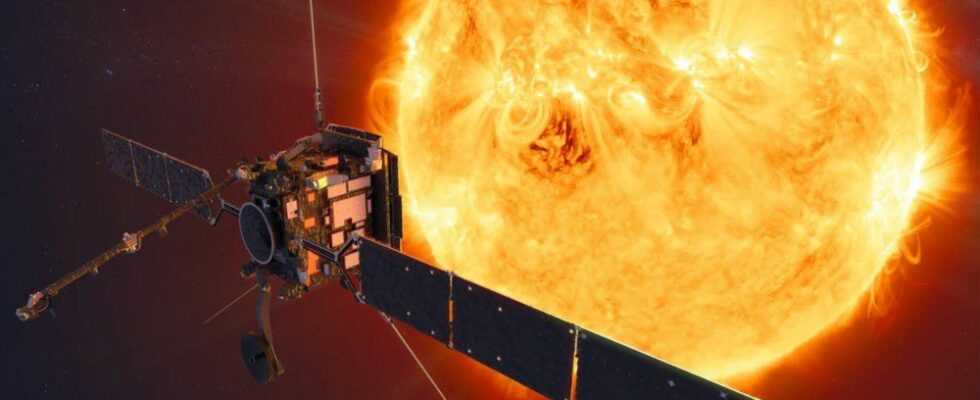On Saturday, the ESA Solar Orbiter probe will come as close as 48 million kilometers to our sun. The probe is said to take the highest resolution images of the solar corona of all time!
Enlarge
Solar Orbiter: ESA probe comes closer to the sun than ever before
© SA/ATG medialab
ESA’s Solar Orbiter probe will come closer than ever to the sun next Saturday, March 26, 2022. The space probe will then only be around 48 million kilometers away from the sun (the distance between the earth and the sun is around 150 million kilometers). This is reported by the Max Planck Institute for Solar System Research (MPS) in Göttingen (which contributed to four of the probe’s ten scientific instruments). So far only NASA’s Parker Solar Probe has flown closer to the sun, reaching a distance of only 8.5 million kilometers last year: Parker Solar Probe – probe from Earth touches the sun for the first time.

Enlarge
The Solar Orbiter Instrumentation.
© ESA / S. Poletti
The highest resolution images of the Corona virus of all time
The images of the hot solar corona taken by Solar Orbiter are said to be the highest-resolution images ever. Solar Orbiter can look into different layers of the sun at the same time. This should bring new insights into how the smallest radiation bursts in the corona arise from the magnetic fields of the visible sun’s surface. “The ten measuring instruments not only measure the electromagnetic fields and solar particles that flow around the space probe, but can also look at the sun itself from very close up for the first time,” as the MPS emphasizes. For example, the PHI instrument (Polarimetric and Helioseismic Imager), which was developed and built under the leadership of the MPS, records the magnetic fields and flow velocities on the sun’s surface; the instruments EUI (Extreme-Ultraviolet Imager), SPICE (Spectral Imaging of the Coronal Environment) and the coronagraph Metis, to which MPS also contributed, provide information from the hot solar corona.
The exciting question: Why is the solar corona, which is further out in space, so much hotter than the actual surface of the sun underneath?
In the past few months, EUI’s telescopes have been able to make the smallest bursts of radiation, so-called “campfires”, visible. The phenomenon occurs more frequently than previously thought and could help explain how the mysteriously high temperatures of the solar corona, which are around one million degrees, arise. Because the visible surface of the sun is significantly “cooler” at around 6000 degrees, as the researchers explain.
According to the MPS, the data, which PHI and EUI already recorded in 2020 and 2021, show “that often closely neighboring regions of different magnetic polarity on the sun’s surface are the origin of the phenomenon. There is much to suggest that structural changes in these spatially limited magnetic fields are decisive for the power supply to the ‘campfires'”. However, currently unknown processes must also play a role and the scientists hope to be able to better understand these relationships with the data that will soon be received from the probe.
First look at the sun poles
Another exciting aspect: Solar Orbiter should also look at the polar regions of the sun. Since the probe will leave the orbital plane in which the earth and the other planets orbit the sun by more than 30 degrees by the end of the mission, it should be possible to look at the poles of the sun for the first time. Solar Orbiter will observe the solar winds escaping near the poles.
This is how it goes
Solar Orbiter’s current, highly elliptical orbit will change little over the next three years, as the researchers explain: the spacecraft will reach its closest point to the sun about every six months. The next time in October 2022. Then the probe will even approach our star at around 42 million kilometers.
ESA probe: You’ve never seen the sun so close
